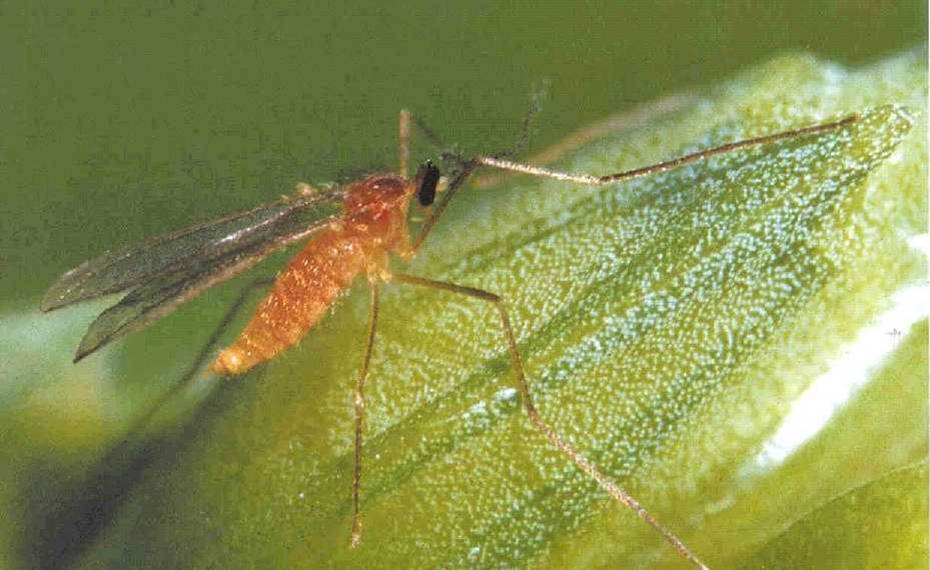
Recent warm evenings this week have resulted in reports of Orange Wheat Blossom midge adults at threshold levels in East Anglia and Lincolnshire. According to Dow AgroSciences Pestwatch, with the short-term forecast being favourable for adult flight, growers are being advised to monitor crops at susceptible growth stages closely. Although many crops may be beyond susceptible growth stages, later winter wheats and spring wheats may still be at a susceptible stage.
Growers and advisors should go to http://www.dowagro.com/uk/cereal/pest.htm to monitor midge numbers, assess their own risk more accurately and optimize spray timings to ensure effective pest control and to minimize impact on the environment.
Sarah Hurry of Dow AgroSciences explains that Orange Wheat Blossom midge larvae cause most damage by feeding on developing grain and that economic risk is highest in crops intended for seed or milling. “This is reflected in the lower threshold of one Orange Wheat Blossom midge per 6 ears. The threshold for feed wheat is one midge per 3 ears. One Orange Wheat Blossom midge larvae feeding per grain site can cause about 30% yield loss; with two or three larvae per grain site loss can be as much as 75%, or even higher if ear emergence is late. In addition larval feeding can induce premature sprouting in the ear and a reduction in Hagberg Falling Number. Secondary fungal attack can follow under damp conditions.”
She explains that damage occurs when egg laying coincides with the vulnerable growth stages of the crop (GS 53-59). “Some varieties have natural resistance to this pest, so won’t need monitoring or treatment. Some crops are already passed this stage but there are still plenty of winter and spring wheats that could be at risk.”
Sarah advises that if chemical treatment is justified by thresholds being met or exceeded, growers should use Dursban WG at 0.6 kg/ha in 200 to 1000 litres of water once the majority of ears have emerged. “Dursban WG controls all the life stages of the pest, giving growers the widest window of opportunity and more flexibility to control this damaging pest. Dursban WG gives high knockdown of adult midges, effective activity of 7 to 10 days to control further flights of adults plus effective vapour action to control larvae emerging from eggs laid by the first flight of adults. Pyrethroids and other alternatives will only reduce adult midge populations and will not control larval populations.”
“Precautions should be taken to minimise impact against wildlife by applying an effective insecticide only when necessary. In order to allow an area for beneficial arthropods to survive and colonise the field, growers must comply with the Stewardship ‘Say No to Drift’ guidelines, including adopting a 20 metre no-spray buffer zone beside watercourses and by using LERAP three-star low-drift nozzles and adopting a 12m no-spray buffer zone beside hedges or grass strips. Growers and advisors can go to www.saynotodrift.co.uk/arable/ for further details,” points out Sarah.
Dursban WG (75% w/w chlorpyrifos formulated as a Water Dispersible Granule and packed in a 1 kg pack) is recommended for the control of Wheat Blossom midge, Leatherjackets, Wheat Bulb fly and Frit fly. For Wheat Blossom midge, apply Dursban WG at 0.6 kg per ha between ear emergence and the start of flowering (GS 51-59).
